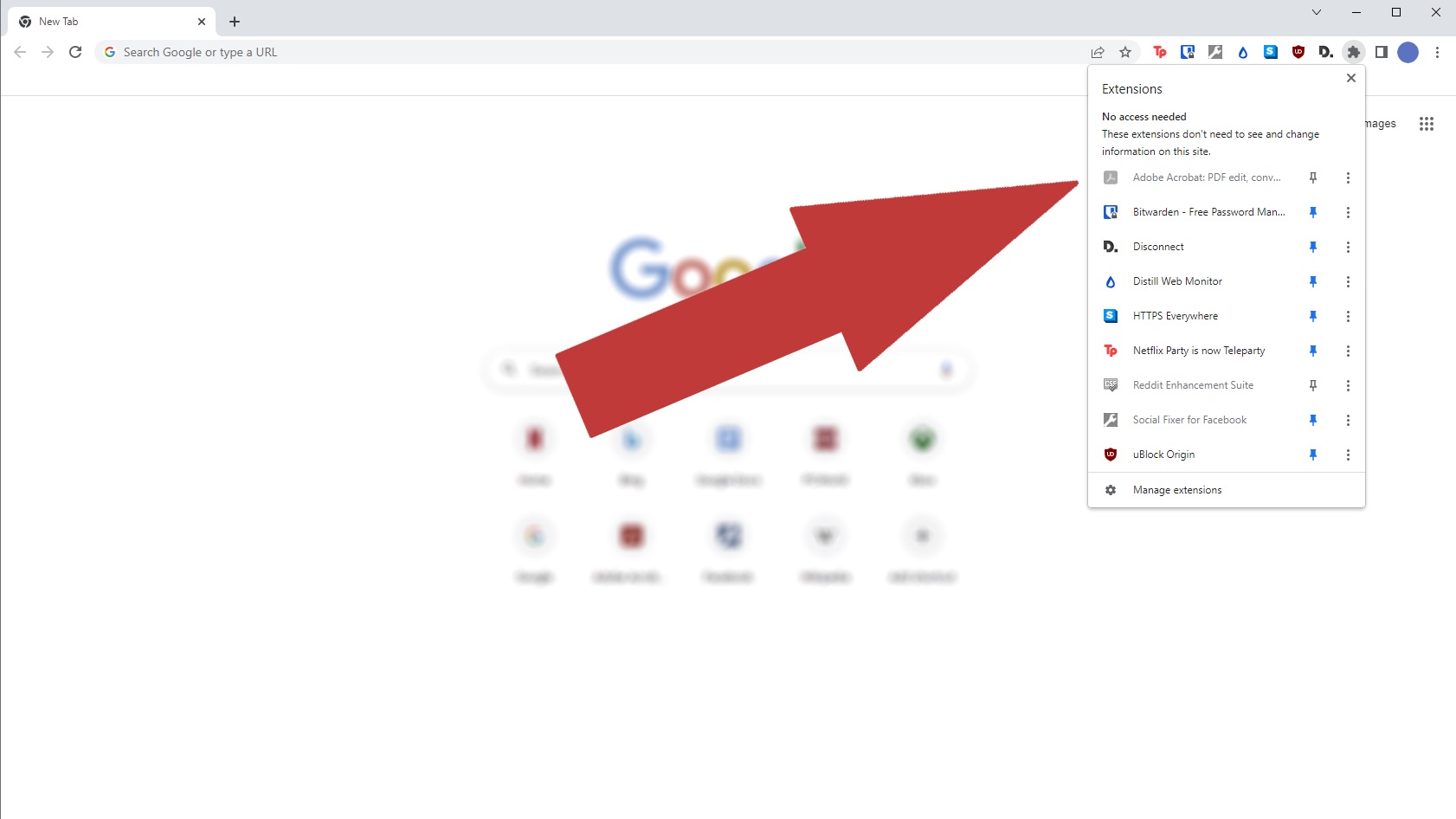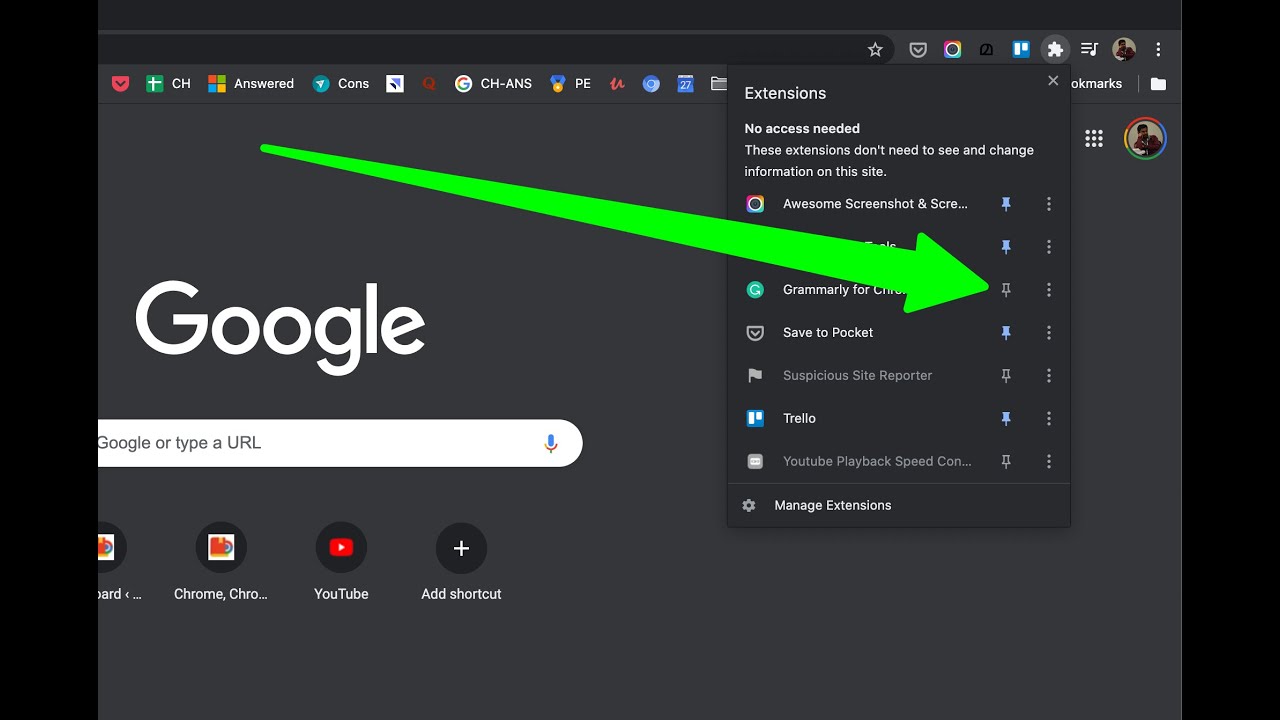Introduction
Google Chrome is a powerful and versatile web browser that millions of people around the world rely on for their daily internet activities. Whether you're browsing the web, streaming videos, or working on important projects, having a smooth and responsive browsing experience is crucial. However, there are times when your browser may encounter issues such as slow performance, unresponsive tabs, or glitches that can disrupt your online activities. In such situations, restarting your browser can often resolve these issues and restore smooth functionality.
Restarting your browser can help clear temporary glitches, free up system resources, and provide a fresh start for your browsing session. It's akin to giving your browser a quick refresh, allowing it to start anew and potentially resolve any underlying issues that may be causing performance hiccups. Fortunately, Google Chrome offers several convenient methods to restart the browser, each tailored to suit different preferences and situations.
In this article, we'll explore three effective methods to restart your browser on Google Chrome. Whether you prefer using the browser's menu options, keyboard shortcuts, or the task manager, you'll find a suitable approach to quickly refresh your browsing experience. By understanding these methods, you can easily troubleshoot common browser issues and ensure a seamless and enjoyable browsing experience. Let's dive into the various methods and discover how to efficiently restart your browser on Google Chrome.
Method 1: Using the Menu
One of the simplest and most straightforward ways to restart your browser on Google Chrome is by utilizing the browser's built-in menu options. This method is user-friendly and accessible, making it an ideal choice for individuals who prefer a visual and intuitive approach to managing their browser settings.
To begin, look to the top-right corner of your Google Chrome window, where you'll find the three vertical dots arranged in a vertical line. This icon represents the main menu of the browser and serves as a gateway to a wide range of essential functions and settings. Click on these dots to reveal a dropdown menu that presents various options for managing your browsing experience.
Within the dropdown menu, navigate to the "Settings" option, which is typically located towards the bottom of the list. Clicking on "Settings" will open a new tab within the browser, displaying a plethora of customization and configuration options for Google Chrome. Here, you can fine-tune your browsing preferences, manage extensions, and explore advanced settings to tailor your browsing experience to your liking.
Once you've accessed the Settings tab, scroll down to the bottom of the page to reveal the "Advanced" option. Clicking on "Advanced" will unveil additional settings and features that delve deeper into the inner workings of Google Chrome. Among these advanced options, you'll find the "Reset and clean up" category, which includes the "Restore settings to their original defaults" function.
By selecting "Restore settings to their original defaults," you'll initiate the process of resetting your browser to its default state, effectively restarting the browser and clearing any potential issues that may be affecting its performance. This action will reset your startup page, new tab page, search engine, and pinned tabs, as well as disable extensions and clear temporary data like cookies. It's important to note that your bookmarks, history, and saved passwords will not be cleared during this process, preserving your essential browsing data.
After confirming your selection, Google Chrome will proceed to restart, implementing the changes and refreshing the browser to provide a clean and optimized browsing environment. This method offers a convenient and comprehensive approach to restarting your browser, ensuring that any underlying issues are effectively addressed, and your browsing experience is rejuvenated.
In summary, using the menu to restart your browser on Google Chrome is a user-friendly and effective method that streamlines the process of resolving common browser issues. By leveraging the intuitive menu options and accessing the advanced settings, you can swiftly refresh your browser and enjoy a seamless browsing experience.
Method 2: Using Keyboard Shortcuts
Another efficient and expedient method to restart your browser on Google Chrome involves utilizing keyboard shortcuts. This approach is particularly appealing to individuals who prefer quick and direct actions, bypassing the need for extensive menu navigation. By leveraging keyboard shortcuts, you can swiftly initiate the browser restart process, saving valuable time and effort.
To begin, ensure that Google Chrome is the active window on your computer screen. With the browser in focus, you can proceed to execute the keyboard shortcut that triggers the restart action. The specific combination of keys to achieve this varies based on your operating system, with distinct shortcuts for Windows, macOS, and Linux systems.
For Windows and Linux users, the keyboard shortcut to restart Google Chrome involves simultaneously pressing "Ctrl + Shift + Q." This command prompts the browser to close all active tabs and windows, effectively restarting the application. It's important to note that this action will not prompt a confirmation dialog, so it's essential to use this shortcut judiciously to avoid unintended closure of important tabs or unsaved work.
On the other hand, macOS users can utilize a slightly different keyboard shortcut to achieve the same result. By pressing "Command + Option + Q" simultaneously, you can prompt Google Chrome to restart, providing a quick and seamless method to refresh the browser and address any performance issues.
The use of keyboard shortcuts to restart your browser on Google Chrome offers a convenient and expedited approach, catering to users who value efficiency and direct control over their browsing experience. By mastering these shortcuts, you can swiftly navigate the restart process, ensuring that your browser is rejuvenated and ready for uninterrupted browsing.
In summary, leveraging keyboard shortcuts to restart Google Chrome provides a swift and direct method to refresh the browser, catering to users who prioritize efficiency and streamlined actions. By familiarizing yourself with these shortcuts, you can effortlessly initiate the restart process and maintain a smooth and responsive browsing experience.
Method 3: Using Task Manager
When encountering persistent issues with Google Chrome, such as unresponsive tabs or sluggish performance, utilizing the Task Manager can provide a powerful solution to restart the browser and address underlying issues. The Task Manager serves as a comprehensive tool for managing and troubleshooting browser processes, offering users a high level of control and insight into the browser's operations.
To access the Task Manager in Google Chrome, you can employ a straightforward keyboard shortcut. Simply press "Shift + Esc" while the browser is active to launch the Task Manager interface. Alternatively, you can access the Task Manager by clicking on the three vertical dots in the top-right corner of the browser window, navigating to "More tools," and selecting "Task Manager" from the dropdown menu.
Upon opening the Task Manager, you'll be presented with a detailed overview of all active processes and tabs within Google Chrome. This comprehensive view allows you to monitor resource usage, identify unresponsive tabs or extensions, and manage individual processes to optimize the browser's performance.
To restart the browser using the Task Manager, begin by locating the main "Browser" process within the Task Manager interface. This process represents the core functionality of Google Chrome and serves as the primary entity to restart the browser. Once you've identified the "Browser" process, select it by clicking on it to highlight the entry.
With the "Browser" process selected, navigate to the bottom-right corner of the Task Manager interface, where you'll find the "End process" button. Clicking on this button will prompt a confirmation dialog, allowing you to verify your decision to end the selected process. Upon confirmation, the "Browser" process will be terminated, effectively restarting Google Chrome and providing a fresh start for your browsing session.
By utilizing the Task Manager to restart Google Chrome, you gain a comprehensive and granular approach to managing browser processes and addressing performance issues. This method empowers users to directly intervene in the browser's operations, ensuring a tailored and effective solution to persistent browsing challenges.
In summary, leveraging the Task Manager in Google Chrome offers a robust and insightful method to restart the browser, providing users with a high degree of control and visibility into the browser's processes. By utilizing this powerful tool, you can efficiently address performance issues and maintain a smooth and responsive browsing experience.
Conclusion
In conclusion, mastering the art of restarting your browser on Google Chrome is a valuable skill that can significantly enhance your browsing experience. By exploring the three effective methods outlined in this article, you have gained valuable insights into the diverse approaches available for refreshing and rejuvenating your browser. Whether you prefer the user-friendly menu options, the expedient keyboard shortcuts, or the comprehensive Task Manager interface, each method offers a unique set of advantages tailored to different user preferences and scenarios.
The menu-based approach provides a visual and intuitive method for initiating a browser restart, allowing you to access advanced settings and restore your browser to its default state with ease. This method is ideal for users who appreciate a guided and visually engaging process for managing their browser settings.
On the other hand, the utilization of keyboard shortcuts offers a swift and direct method to restart Google Chrome, catering to individuals who prioritize efficiency and streamlined actions. By mastering these shortcuts, you can effortlessly navigate the restart process, ensuring that your browser is rejuvenated and ready for uninterrupted browsing.
Furthermore, the Task Manager serves as a powerful tool for managing and troubleshooting browser processes, providing a comprehensive view of active tabs and processes within Google Chrome. By leveraging the Task Manager, you gain a granular approach to addressing performance issues and directly intervening in the browser's operations, ensuring a tailored and effective solution to persistent browsing challenges.
Incorporating these methods into your browsing routine equips you with the knowledge and tools to swiftly address common browser issues, such as unresponsive tabs, sluggish performance, or temporary glitches. By proactively restarting your browser using these methods, you can maintain a seamless and enjoyable browsing experience, free from the disruptions caused by underlying performance issues.
Ultimately, the ability to efficiently restart your browser on Google Chrome empowers you to take control of your browsing experience, ensuring that your browser operates at its optimal capacity. Whether you're a casual internet user, a dedicated professional, or a tech-savvy enthusiast, these methods offer valuable solutions to enhance your browsing experience and overcome common challenges with ease. Embracing these techniques will undoubtedly contribute to a smoother and more enjoyable browsing journey, allowing you to make the most of your time online.

























